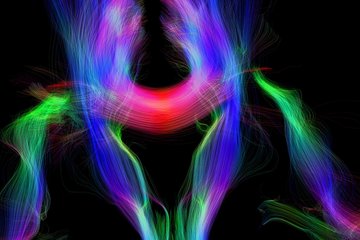People think in many dimensions at a time
When perceiving objects the brain captures a broad range of their properties
When we open our eyes, it is very easy for us to see the different objects, people and animals around us. Traditionally, the dominant view in research has been that a central goal of our perception is to recognize objects and assign them to different categories. Researchers from the Max Planck Institute for Human Cognitive and Brain Sciences in Leipzig and the Justus Liebig University Giessen in collaboration with the National Institutes of Health in the USA have now shown that brain activity when seeing objects can be much better explained by a variety of behaviorally relevant dimensions.

Until now, it was thought that our brain’s visual system breaks down the objects we see into very basic features and then gradually reassembles them with the aim of enabling their recognition. “Our results have shown that recognition and categorization are important goals of our vision, but by no means the only ones,” says last author Martin Hebart, group leader at the Max Planck Institute and professor at Justus Liebig University. “In fact, we find behaviorally relevant signals at all processing stages in the visual system. We were able to show this based on the behaviorally relevant dimensions we had previously discovered”.
The researchers used a computer model to identify 66 object dimensions from behavioral data of over 12,000 study participants. These dimensions not only explain categorization, i.e. whether a dog is an animal, but also cover other characteristics, such as colors and shapes, as well as gradual values, for example how typical a dog is of an animal. Martin Hebart: “This allowed us to explain much better how our brain enables us to perceive the objects in our environment and understand their meaning.”
All processing stages of the perceptual system are involved

First author Oliver Contier looked at the data of three study participants whose brain activity was measured in the MRI scanner while they saw over 8,000 different images of 720 objects. He describes the results: “When the participants saw a rocket, for example, we were able to measure from the brain activity that their visual system not only recognized that it was a rocket or that a rocket is a vehicle, but also that it is grey and elongated, has to do with fire, can fly, or sparkles. All processing stages of our perceptual system are therefore involved in capturing a broad spectrum of behaviorally relevant properties that together make up our perception.”
Martin Hebart adds: “Our work reveals a multidimensional framework that is consistent with the rich and diverse behavioral relevance of objects. This ultimately explains our broad range of human behaviors better than the categorization-focused approach, and this in turn is crucial for understanding how we perceive and interact with our visual world in a meaningful way.”













